The summer heat in many regions of our country brings new surprises every year, and residents of the middle zone are already thinking about installing air conditioners. However, relatively recently there was no such need. But why do we need technical progress if we don’t enjoy its fruits? Forced cooling of the air in the house is a real salvation for people who, due to age or health conditions, have a hard time surviving peak increases in air temperature. So the cost of purchasing this, in general, expensive device is more than compensated by the opportunity to sleep without suffocating from the heat and avoid heat stroke. Today we will talk about installing an air conditioner with your hands. There is nothing impossible about this.
Do I need to obtain a permit to install an air conditioner?
The answer is not as clear as it seems at first glance. Especially for those who live in an apartment building.

The Housing Code of the Russian Federation may consider the installation of an air conditioner as a refurbishment or even reconstruction of a building. Management companies are required to ensure that no extraneous guy ropes, signs, awnings, or other devices that are not provided for by the architectural design are attached to the walls of the house. So it turns out that to secure the outdoor unit of the air conditioner, you need to obtain permits, but from whom?
According to the same Housing Code, decisions on the reconstruction and repair of a common building are made by a meeting of apartment owners, thus, to obtain permission, you need to submit such a request to the general meeting and receive a protocol in which such permission will be received.
But in practice, the situation is radically different from what the law requires. No federal regulations stipulate from whom the apartment owner must obtain permission to install an air conditioner. There are no clear legal requirements, so the requirement to obtain permission is a highly controversial fact. Moreover, the installation of an outdoor unit of a household air conditioner does not fall under the refurbishment concept. Industrial – yes, household – no.

Problems can only arise if one of the residents is damaged by your installation of the outdoor unit. For example, water will drip from this block onto their balcony, and the noise will be heard when the windows are open. So, when planning the installation location, it is better to think in advance about all the possible consequences.
Can the management company remove your air conditioner for some reason without your knowledge? Has no right, because this will be considered as damage to property – and if they have no legal basis for such actions, you can safely sue them.
To summarize, we can say that there are no clear legislative standards for installing an air conditioner, so if you respect the interests of your neighbors, you can install it without any permits.
Where to install the air conditioner correctly
The installation location is an important factor in the efficiency of the device. The split system is a structure of two parts: indoor and outdoor units. The optimal location must be sought for each of them while taking into account the technical requirements.
What is important to know about installing the indoor unit:
- the distance from the side walls should be at least 30 cm;
- from the obstacle opposite – no less than half a meter;
- to the ceiling – at least 20 cm.
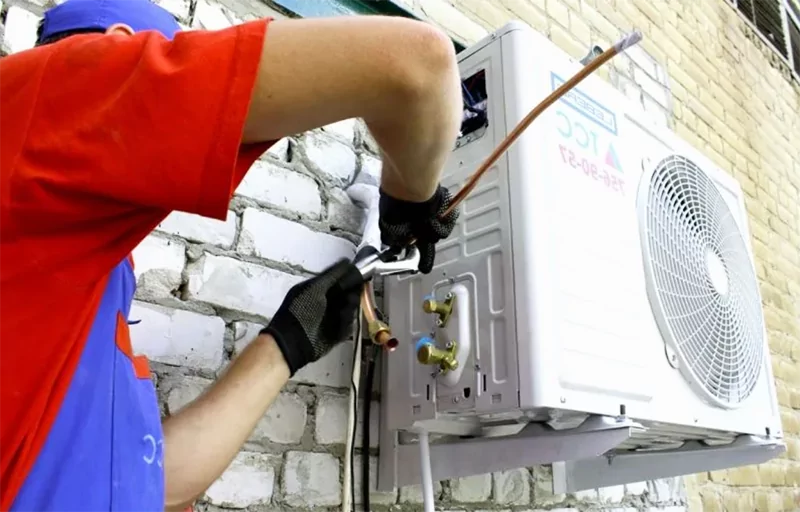
So in most cases, the place for it is chosen to be a balcony or space under a window. For lower floors, it is logical to place the block higher, for example, not under, but above the window, to avoid misunderstandings and childish pranks.
If we are talking about a private house, then you should take into account the load-bearing capacity of the wall; additional supports may be required to firmly hang a rather heavy box.
When you plan the location of both blocks, you must take into account that manufacturers set a minimum and maximum distance between the blocks. Moreover, this indicator may depend on the brand. It is worthwhile to first study this issue in the technical data sheet of the product. The maximum distance can be up to 6 m. If for some reason you need more, then the system will have to be additionally topped up with freon, and this is not a cheap pleasure.
How to install an air conditioner yourself
The split system itself is a rather complex and expensive household appliance, and its installation is also a costly process. Specialists will vying with each other to offer you their services, but in principle, you can do it on your own. The problem may only be in the vacuum pump, but many “shabatniks” who work part-time in this business can do just fine without a vacuum pump.
Materials and tools for installing a split system
But some equipment will still be required. You will need a hammer drill to make a hole in the wall for laying the hose and wires.
In addition, you will need a drill for installing fasteners in the wall, a grinder for cutting pipes, a file or sandpaper, and a flaring tool for copper pipes.
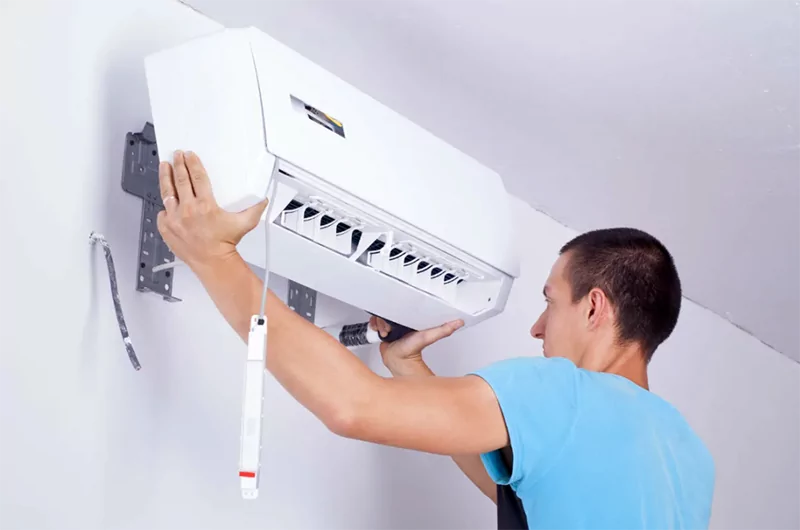
Consumables include a 4-core power cable with a cross-section of 2.5 mm². It is better to take a spare cable. You should also buy special pipes for air conditioners made of copper of two different diameters. The length of these pipes is equal to the length of the route with a margin of approximately 25 cm. The peculiarity of copper pipes for air conditioners is their softness: they easily ensure tightness. When purchasing in a store before transporting, it is important to close the holes on both sides to prevent dust from entering. But in principle, store sellers know about this and most likely will already prepare such packaging for you.
You will also need a piece of rubber insulation for pipes equal to the length of the route, a drainage tube (it can be a polypropylene hose), brackets for attaching the outdoor unit with a load-bearing capacity reserve of approximately 4 times to compensate for wind and snow loads.

Air conditioner installation procedure
In any case, before starting installation work, be sure to read the installation instructions in the technical data sheet of the product. You’ll probably find some special requirements in it, like spacing between blocks, so read it carefully.
First thing. If you have decided on the location of the blocks, examine the walls for hidden utility wiring. It’s easy to damage them, and you won’t have any trouble later.
Installation begins from the inside of the system. Measure the location and install fasteners.
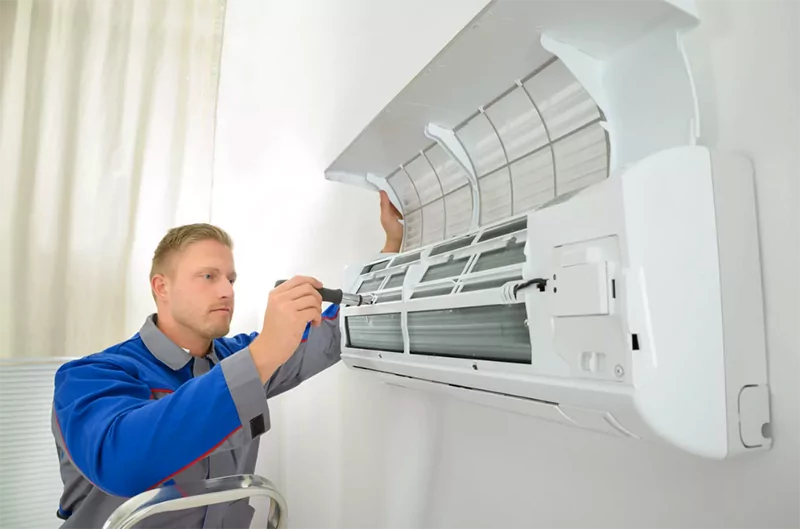
Knowing the location of the indoor unit, you can already determine the location for laying the route and drill a through hole in the wall for it. The route should run at a slight angle so that the condensate flows outward rather than inward. The hole will have to be made quite large – at least 5 cm in diameter.
After preparing the route, brackets for the outdoor unit are installed. This is a very important stage, taking into account the fact that the block will hang outside, possibly at a great height and above the heads of passers-by. All fasteners must be installed according to the instructions; the best option is 10×100 mm anchors. Here it is also very important to maintain a horizontal level.
The outdoor and indoor units are connected by communications – a power cable, two copper tubes, and a drainage route.
First, copper tubes are laid, cut to the required length, and the ends are cleared of burrs so that sawdust does not get inside. Be careful about this because small metal particles can pose a danger to the compressor of the device.
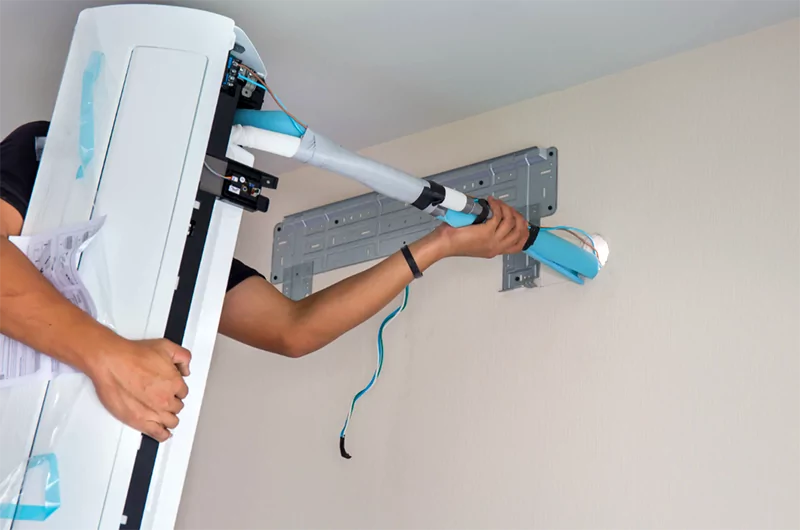
The prepared tubes are threaded into the hole in the wall so that debris does not get inside.
Following the tubes, an electrical cable is threaded into the prepared route and connected by the diagram specified in the instructions for the device.
The last thing in this set of communications is the drainage tube. An important point in its installation is the obligatory slope towards the street, this is necessary for proper drainage of condensate.
All parts of communications are combined into one bundle and wrapped with tape. If there is such a possibility, the route inside the room is hidden in a niche in the wall. If not, they hide it in a box that matches the color of the interior decoration.
There should be no problems connecting communications to the blocks: the diagrams in the technical documentation are quite clear, and it is almost impossible to make a mistake.
Important! If one unit is installed below the other by more than 5 m, a loop must be made in the copper tubes to retain the oil contained in the freon. If the difference is smaller, no loops need to be made.
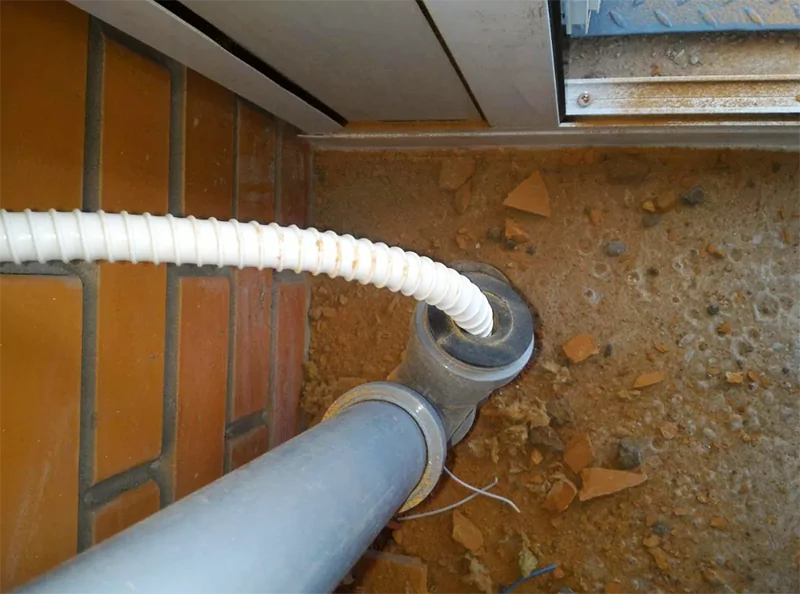
When installing the drainage pipe, it is important to avoid sagging, because a water plug will form in them. The drainage tube is taken as close to the ground as possible, and secured to the wall with clips.
The last stage of installation is vacuuming. Its job is to remove air from the copper tubes connected to the compressor to prolong its life and improve operating efficiency. Air can be removed either with a vacuum pump or, in its absence, by pumping freon from the outdoor unit. You will lose a small amount, but it doesn’t matter.
To pump freon yourself, the plugs on the ports of the external unit are slightly unscrewed. The hexagon needs to be unscrewed literally for a second, this is enough. After unscrewing, excess pressure is created in the route. Next, you also need to press the spool valve for a couple of seconds and release excess gases.
The most common mistakes when installing air conditioners
In principle, installing a split yourself is not such a difficult task, but there are common beginner mistakes that should be avoided:
- poor-quality rolling of copper tubes, which leads to loss of freon. If you do not take care of this, you will have to pump in new freon, and this is very expensive;
- creases on copper tubes may appear due to poor-quality installation. The movement of refrigerant will be difficult, and this will affect the operation of the air conditioner;
- lack of vacuumization – air in the system quickly damages the compressor;
- and finally, you should never skimp on the choice of materials or replace them with analogues, especially copper tubes.
